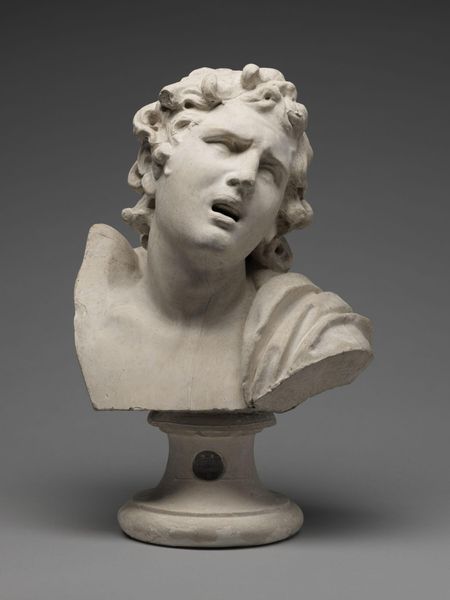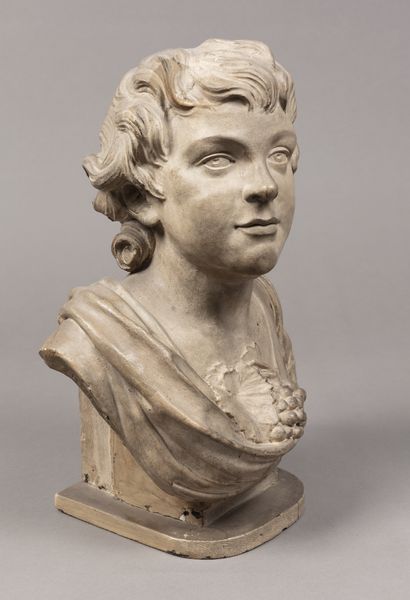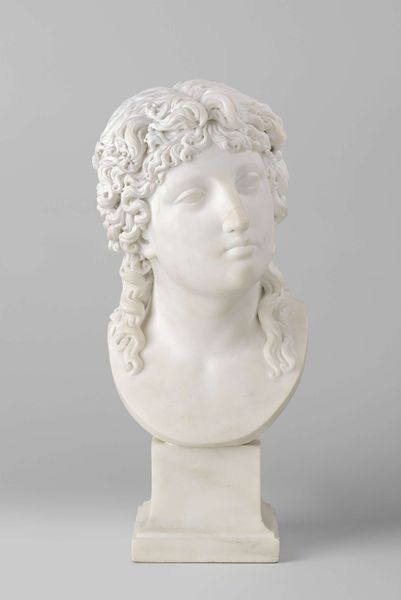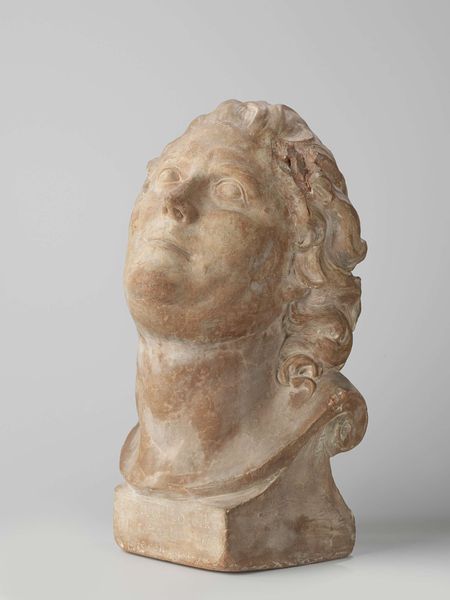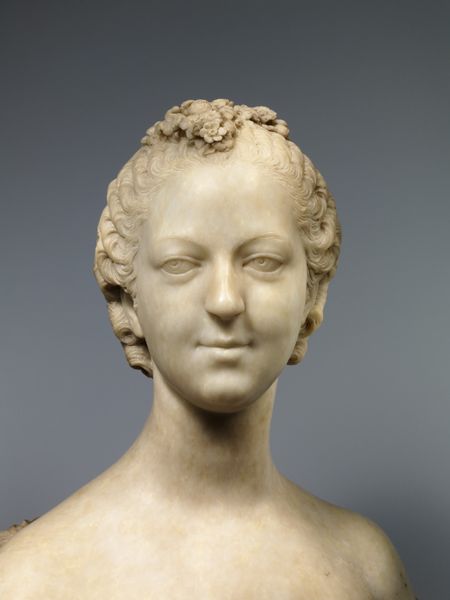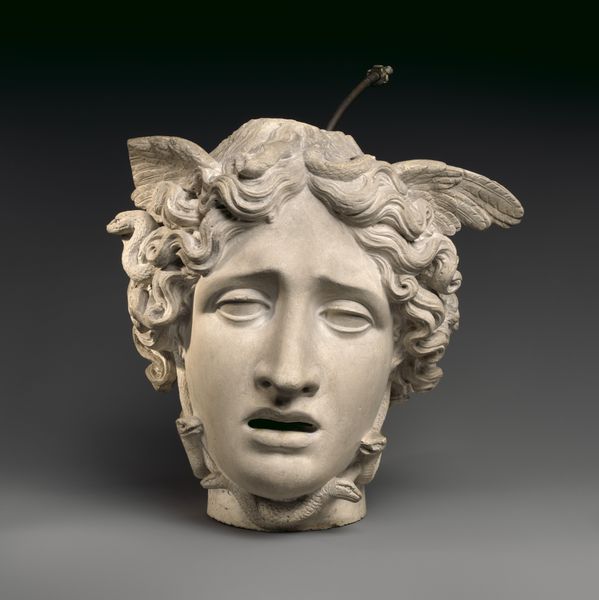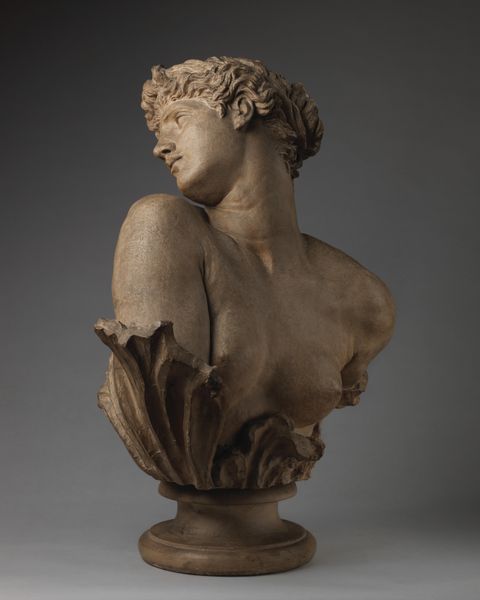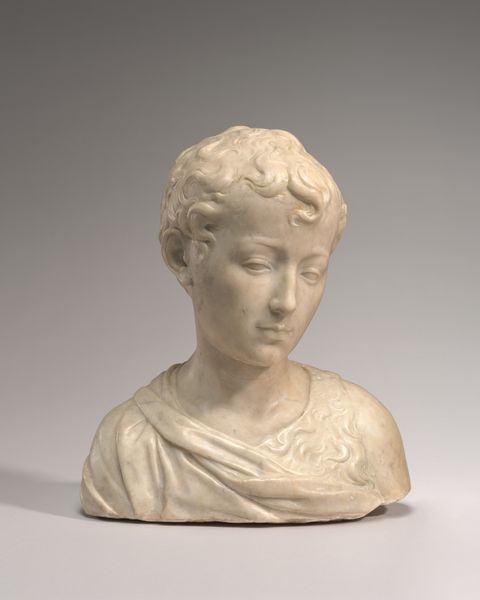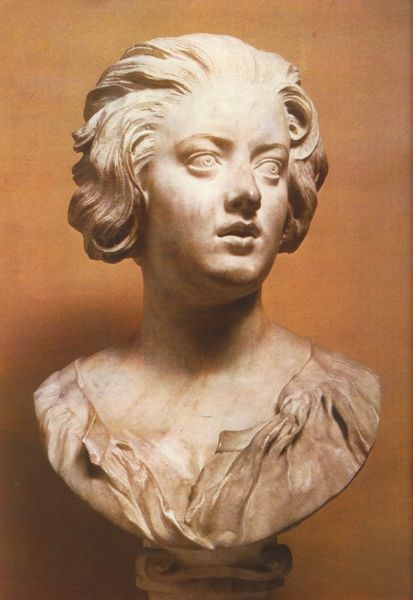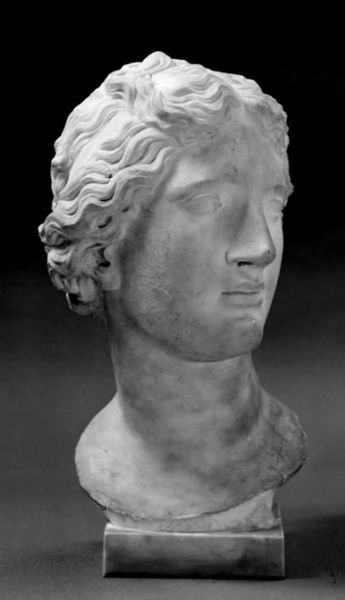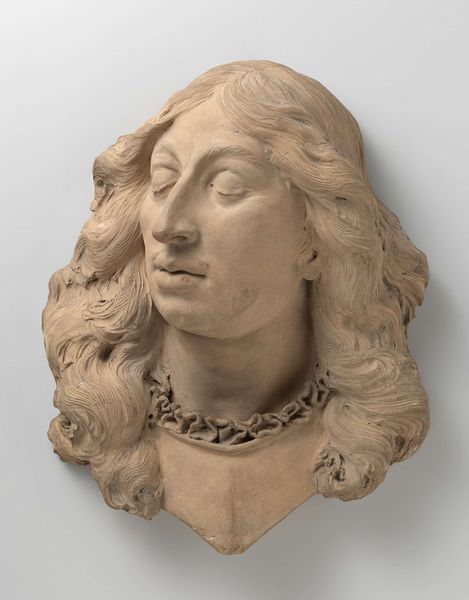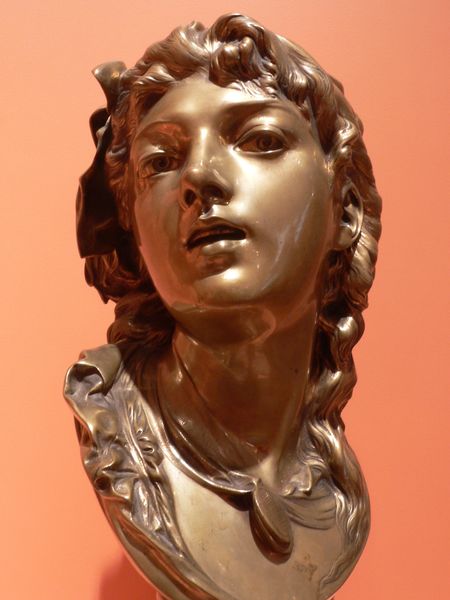
carving, sculpture, marble
#
portrait
#
carving
#
baroque
#
sculpture
#
sculpture
#
academic-art
#
marble
Dimensions: 40.5 × 33 × 29 cm (15 7/8 × 13 × 11 3/8 in.)
Copyright: Public Domain
Editor: Here we have Francesco Mochi's "Bust of a Youth (Saint John the Baptist?)" carved from marble sometime between 1630 and 1640. I'm struck by the almost feminine quality to this sculpture, and how idealized the features are. How do you read the piece? Curator: Well, it's interesting that you pick up on the feminized aspect. I think it speaks volumes about the Baroque era's negotiation of gender and power. Saint John, traditionally a symbol of virility and prophecy, is here softened, almost androgynous. What does it say about the period's anxieties and aspirations when even religious icons are presented with such fluid identities? Consider the Counter-Reformation context: Was this a way to appeal to broader audiences, diluting dogma with sensual appeal? Editor: So you’re suggesting that Mochi was deliberately blurring gender lines as a form of cultural commentary or even critique? Curator: Precisely. It’s worth questioning if Mochi challenged traditional masculinity or simply aestheticized religious figures according to prevailing tastes. We have to examine the agency of both the artist and his patrons and consider if the effeminate depictions of male saints speak to larger power structures and gender dynamics in the papal court. It invites us to consider: How did the social and religious expectations of the time shape artistic representation? Editor: It's fascinating to think about art as a mirror reflecting complex societal issues of the time. It almost feels like these pieces encourage us to ask who truly benefits from this representation and who gets excluded. Curator: Exactly. We should never see art as just beautiful objects but as loaded sites of cultural production. By asking those critical questions, we empower ourselves to read the visual language of the past in ways that can reshape the narratives of the present.
Comments
No comments
Be the first to comment and join the conversation on the ultimate creative platform.

